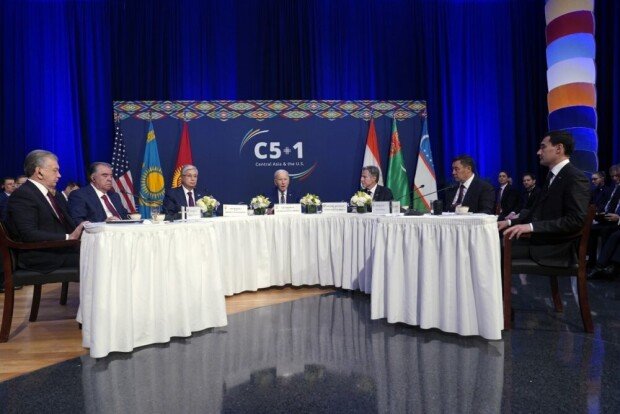US accelerates efforts to engage with the Global South
US accelerates efforts to engage with the Global South
Posted September. 21, 2023 08:14,
Updated September. 21, 2023 08:14

The United States has established a new multinational cooperation framework with countries in Central Asia, Central and South America, and West Africa. Making most of China’s absence from the international scene due to slow economic recovery and leadership issues, the U.S. has ramped up efforts to embrace the ‘Global South (emerging countries).’ After the North Korea-Russia summit, Russian President Vladimir Putin is scheduled to visit China to attend the Belt and Road Summit next month, suggesting that the competition between the United States and China for hegemony continues to grow.
●The U.S. takes advantage of China’s absence on the global scene
On Tuesday, U.S. President Joe Biden hosted a ‘C5+1 (United States)’ summit with five leaders of Central Asian countries on the leg of their trip to New York attending the United Nations General Assembly. This was the first time for the U.S. president to meet with leaders of Kazakhstan, Kyrgyzstan, Tajikistan, Turkmenistan, and Uzbekistan since the CS+1 foreign minister-level meetings were held in 2015.
The Barack Obama administration created the C5+1 framework to the Belt and Road Initiative, China's project to expand economic territories overseas, in check. These countries are key countries in the Belt and Road Land Silk Road initiative connecting China and Europe.
President Biden’s invitation was in response to Chinese President Xi Jinping, who invited the leaders of CS countries in May to Xi'an, the starting point of the Silk Road, for the first time since the collapse of the former Soviet Union to hold a 'C(China)+C5' summit.
On Monday, the U.S. launched the Partnership for Atlantic Cooperation (PAC), participated by 33 countries from Europe, West Africa, and Central and South America along the Atlantic Ocean. PAC includes Brazil, a key BRICS country, as well as Equatorial Guinea, where China is trying to build a naval base, and Nigeria, a participant of the Belt and Road Initiative.
weappon@donga.com







